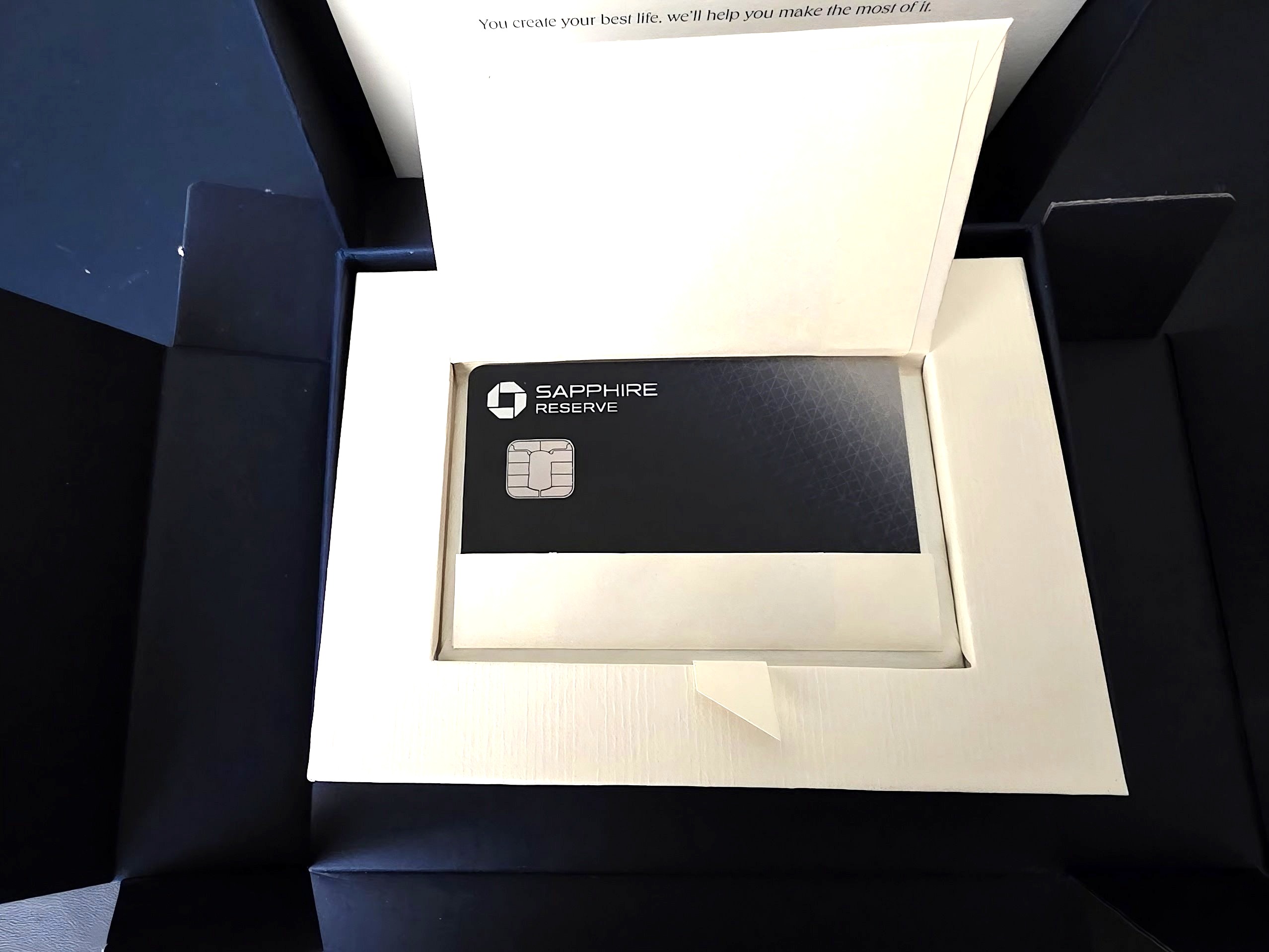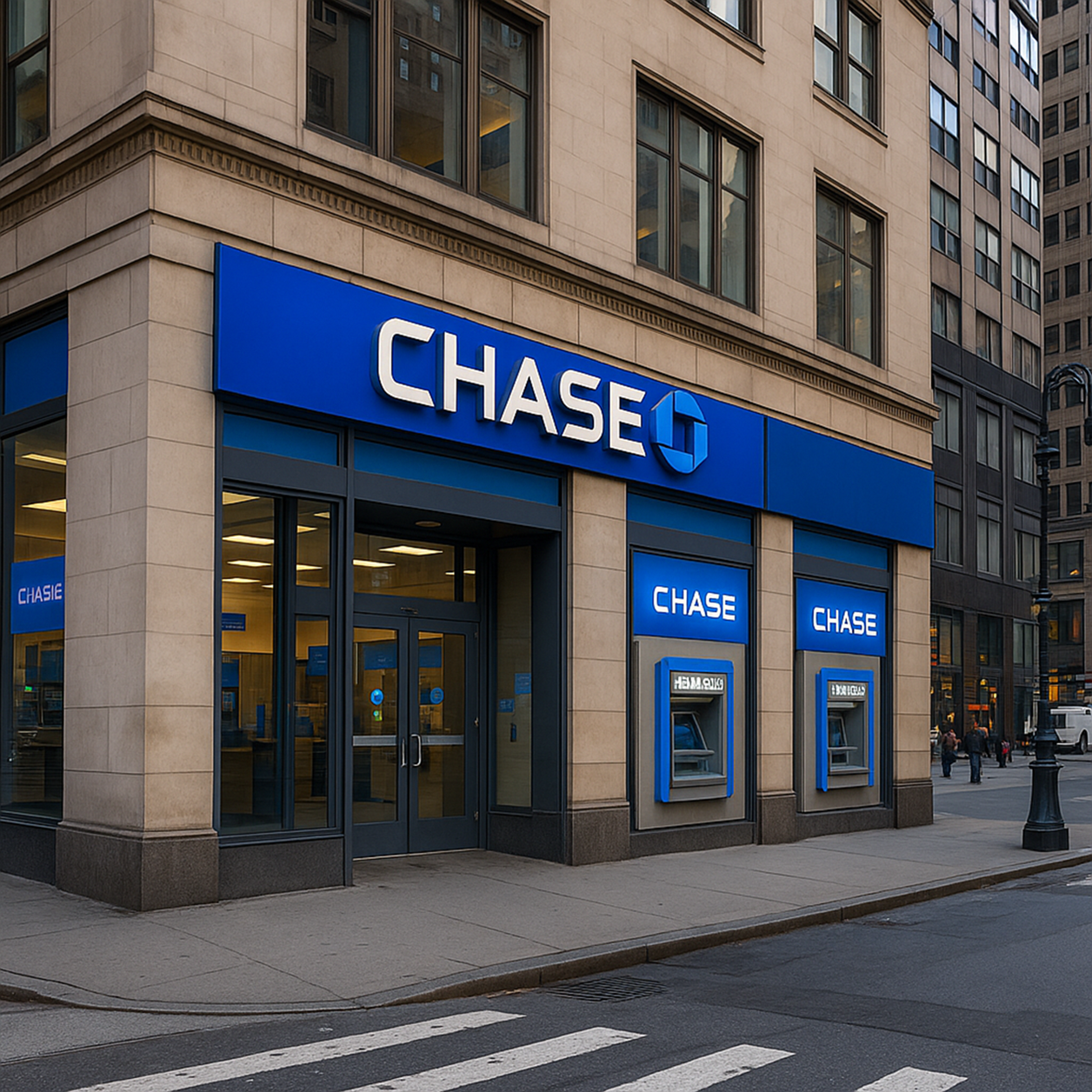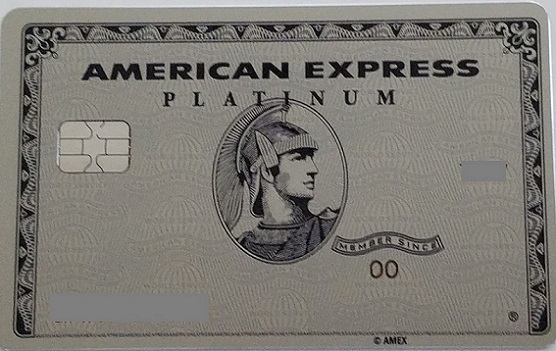I receive compensation for content and many links on this blog. Citibank is an advertising partner of this site, as is American Express, Chase, Barclays and Capital One. Any opinions expressed in this post are my own, and have not been reviewed, approved, or endorsed by my advertising partners. I do not write about all credit cards that are available -- instead focusing on miles, points, and cash back (and currencies that can be converted into the same). Terms apply to the offers and benefits listed on this page.
Chase has a new approach to credit card bonus offers. It’s been implemented with their Sapphire cards, timed with the launch of the new Chase Sapphire Reserve®.
Instead of being eligible for a new cardmember bonus every 48 months, it’s just once in a lifetime per card. (Plus, if you have an open card within the Sapphire family, they won’t give you the bonus even if you’ve never received one for the specific product you’re applying for before.)

Instead of turning you down completely for cards if you aren’t eligible for the bonus – either because you’ve had a bonus in the past or have a similar open card – they’ll tell you that you won’t be eligible for the bonus, but do you still want to apply?
This is all bad news for consumers getting multiple bonuses for the same cards over time! But separating card approvals from bonus eligibility is smart. Sometimes a customer just wants the card! And turning them down is a bad experience – think about a United Global Services customer being told they can’t have a United Visa, or a Marriott Ambassador being refused a Marriott co-brand, despite having the income and credit to qualify. We’ll have to wait and see how Chase’s new approach spreads to products across their portfolio. Technology can be cumbersome at a legacy bank.

Regardless, it’s a huge switch. When I first got involved in rewards there were few limits. You could have multiple open cards of the same type, getting a new one and its bonus every few months. There were no minimum spend requirements to earn the bonus, either. Those gradually crept in around 17 years ago (e.g. $250 at Chase, $750 at Citibank). Of course bonuses were much smaller then. I’d never seen a 20,000 mile bonus offer for a United card until April 2002.
American Express is also in the process of a big change in how they approach cardmember bonus offers. Twenty years ago the rule was one bonus per card in a lifetime, but if you re-applied for a bigger offer they’d honor the difference between that offer and what you’d previously received. So when they re-instituted the ‘once bonus per lifetime’ rule (with lifetime being ‘as long as American Express remembered), it felt like ‘back to the future’.
Over the last decade they’ve been adept at targeting the best bonus offers, although the forumlas for who receives them are opaque and not always well walled-off. Their standard public offers for their own-branded cards (as opposed to co-brands) often haven’t been the best. They’ve made bigger offers through channels that prequalify the customer in some way – such as never having had an American Express before, or some attribute that makes them think you’d be a big spender.
American Express innovated with popups telling consumers they aren’t eligible for a bonus up front and do they still want to apply, that Chase now copies. That gave customers confidence to apply if they were uncertain, and there’s not supposed to be a hard credit pull unless they continue.

Now Amex has an even more refined approach: ‘as high as’ offers. They advertise a bigger number, but you may or may not be eligible for that highest number. You find out your exact offer amount after applying.
This started with The Platinum Card® from American Express, which has now promotes that may be eligible for as high as 175,000 Membership Rewards® Points after you spend $8,000 in eligible purchases on your new Card in your first 6 months of Card Membership.
Welcome offers vary and you may not be eligible for an offer. Apply to know if you’re approved and find out your exact welcome offer amount – all with no credit score impact. If you’re approved and choose to accept the Card, your score may be impacted.
175,000 points is much, much higher than the offers they’ve been promoting. That part is great!

And now the approach has exteneded to the American Express® Gold Card which is my favorite points-earning Membership Rewards card (and my wife’s primary card).
The offer they’re promoting had been 60,000 for meeting qualifying spend. Now, you may be eligible for as high as 100,000 Membership Rewards® Points after you spend $6,000 in eligible purchases on your new Card in your first 6 months of Card Membership. And as with Platinum,
Welcome offers vary and you may not be eligible for an offer. Apply to know if you’re approved and find out your exact welcome offer amount – all with no credit score impact. If you’re approved and choose to accept the Card, your score may be impacted.

This card has strong earning in valuable categories: 4X Membership Rewards® points per dollar spent on purchases at restaurants worldwide, on up to $50,000 in purchases per calendar year, then 1X points for the rest of the year; 4X Membership Rewards® points per dollar spent at US supermarkets, on up to $25,000 in purchases per calendar year, then 1X points for the rest of the year; 3X Membership Rewards® points per dollar spent on flights booked directly with airlines or on AmexTravel.com.
I think this new American Express approach is unwise, though, because it’s a bad consumer experience. Before, there was a clear offer being made. If the customer was approved for it, that’s the offer they received. Now American Express is saying,
- We have best offers, but they aren’t for you
- There are better offers out there – maybe you shouldn’t take this one because it isn’t our best!
Nonetheless these efforts are part of a larger industry trend to focus new cardmember acquisition investments only on prospects that the issuer believes are most likely to pay off for them. If they can avoid costly initial bonuses for customers who aren’t likely to keep and spend on the card (like those who keep coming back for bonuses every four years, or who the bank’s model suggests aren’t likely to be heavy spenders or whose spend on a new card might come from the bank’s other products), then the overall card economics are better.
Ultimately, card bonuses are an important tool.
- They make a card focal. It causes a potential applicant to stop and pay attention. Plus, a consumer might even know that it’s the best product for their needs, but there are so many things on their list to do. The bonus moves that up to being one of the top 5 things to do this week.
- They build trust. Customers don’t trust banks or the rewards they offer. By fronting the reward for using the card, the consumer has the points quickly to get value from the product. They can redeem the points, which proves to them they’ve made a good decision getting the card and putting their spending on it. Telling the customer to ‘wait a year’ after changing their behavior up front to see the value doesn’t align with the customer’s desire to get things now.
Several years ago Barclays came out with their ‘Arrival Premier’ card which didn’t offer a bonus up front at all, but gave a bonus every year for meeting spending targets. The whole industry was rooting for them – something you don’t see often among rival banks. Everyone hoped they’d found a way around big marketing spend up front in the form of bonuses – that they could acquire customers without having to spend broadly, instead focusing their investment only on the customers they actually wanted (who stuck around, and used the card heavily).
It didn’t work. Very few customers applied. The value proposition wasn’t strong enough, people didn’t want to give their loyalty first and wait a year for rich rewards. And there was no reason to ‘act now’ out of fear of losing out. When you can get the same card rewards and benefits no matter when you pull the trigger on an application, and you’re busy, you might as well wait until tomorrow – but when each day comes, it’s always today, and you never reach tomorrow.
One upside of this new approach that Chase and American Express are taking is that you’d expect richer rewards and lower annual fees to be the result in a highly competitive industry. In fact we have seen much richer rewards over time – standard bonuses were smaller and points-earning was generally just one mile per dollar when I got started – but fees have also risen. There are also a lot more rewards card issuers than there used to be, and a lot more products, so the customers Chase and American Express are trying to avoid can simply look elsewhere.
For rates and fees of The Platinum Card® from American Express, click here.
For rates and fees of the American Express® Gold Card, click here.


I don’t know what exactly ‘ending’ means. people like me just keep the cards no matter what. Those companies have been too generous about signing up bonuses.
pretty clear that churning SUBs is ending, and PUJ is real. The future will be 2% cash back unless you’re ok with tremendous gaming, spend reminders or organic spend. I think spend bonuses like are seen commonly on the SYW and united cards will also become more common. Issuers want to end churning and increase stickiness.
In my opinion there are no annual fee cards that are competitive with no fee cards after the sign up bonus is not included in the calculation. Banks are counting on habits that aren’t reviewed just like insurers who count on customers not shopping their policies constantly or grocery shoppers that buy their brand habit vs cost per ounce.
The lazy consumer makes the perfect customer -follow along lemmings.
I’m finding the best churn opportunity still exists in financial services. Moving the same portfolio around between companies still produces a substantial benefit at zero cost.
@ Gary — It’s hard to conclude that churning is on its death bed when my SO and I just opened 10 cards with about 800,000 points/miles of SUBs over a span of a few days. If SUBs do come to an end, we will dramatically cut down on AFs paid and stick with a realtively a low cost product like VentureX or CSP. About the time we have 3 MM DL + 3 MM AA + 1 MM UA, I think we’ll be ready to just stay home. The people designing these lifetime statuses know what they are doing…by the time you can benefit from the best benefits, you either won’t want to and/or will be too old to. Life is short!
It appears that under the new CSR, Edit bookings receive loyalty program credit in virtually every hotel network. Even ones I wouldn’t have expected. Putting pricing to the side, if I can get 8X versus 3X on hotel bookings, I wouldn’t sweat there being no SUB if that’s what Chase offered me. Certainly, it would not work out that way for some/many. But, for high spenders, it seems that it would.
lets just hope they don’t change to one bonus per household. When bonuses are big enough both my SO and I will both apply for a card.
I have a good friend who has not ever churned cards. He has a very good income. He called me the other day because he needs points for biz class flight to get him to a cruise next year from HKG to TYO. He has been EXP with AA for years and is lifetime titanium with Marriott. None of those points are helpful for the biz class flights he wants. I did some looking and found good availability with CX, but he has no AMEX points to transfer. He has NEVER had an AMEX card.He should have been their ideal applicant. I told him to apply for a Gold card for him and his wife at the 90K offers. He decided to go for the platinum “up to 175K” offer. He applied. Then he had to wait for his offer as it wasn’t immediate. It was over the Juneteenth holiday so he had to wait another day for an answer. He got impatient so I told him to call the recon line. They took his blood type, sperm sample and his first born only to tell him his offer was 80K. They lost a customer for life on that one.
We’ve had enough of the hoops and games from the Amex and Chase circus. Their profits are huge, and they will now stick it to never with $795 fees? Bye Amex, bye Chase. Hello Venture X bonus offer. I’ll turn my Platinum card in before renewal in October. $795 for renewal without any bonus is ridiculous. Capital One is a more friendly Corp than either anyway.
Gary, it’s spelled ‘Gilded,’ not ‘golden.’
Gary, is 5/24 actually going away? At least for sapphire cards? I haven’t heard this at all.
I think creativity will be the key moving forward. For example, I am in between personal cards waiting to get under 5/24. So I got the Wells Fargo Signify card. Since I have the Autograph from years back, the $500 bonus is 50,000 points. Plus the 2% on the spend, it works out to 60k points.
It’s NOT as good as all the ink bonuses I’ve gotten through the years. But it is an off-season business class flight through KLM.
I’m really confused by this flurry of posts about Chase. I literally called a CSR rep two days ago and was explicitly told next June, 48 months after getting the CSP, I would be eligible for the CSR bonus. They told me Chase has no plans to discontinue the practice.
Quick note, this isn’t entirely accurate “(Plus, if you have an open card within the Sapphire family, they won’t give you the bonus even if you’ve never received one for the specific product you’re applying for before.)” The language is ‘may not be eligible’ and it depends on factors that unfortunately are not public. I have a Sapphire Preferred and just received the new Sapphire Reserve, with the bonus.
I’m extremely unlikely to apply for a card without knowing what I’m signing up for.
Pop up and sapphire rules not working exactly as advertised. Was declined for reserve with no pop up. Letter says it is because I have a preferred
Hasn’t AMEX also limited bonuses for the Platinum/Gold family? Only one bonus per lifetime–so you can get bonused for the Platinum or bonused for the Gold but not both?
I really enjoy reading the comment section on articles but lately people are abbreviating so many things it takes too much of my time to decipher what they are trying to say. It would be nice if View from the wing would filter all of these excessive abbreviators to the bottom of the pile of comments. Really people, try to do better does it really take that much extra time to just spell things out? I understand a few abbreviations here and there are useful but the ones I am seeing in the last year or so are just getting ridiculous. From now on I’m going to glance at the paragraph and if I see more than one abbreviation I’m not going to read any further.
I’m of a mixed opinion on some of these changes. On the one hand, some of the more draconian card blocks going away is nice – from my standpoint, a several hotel cards’ sole purpose in life is to provide me with an FNA of some sort (hi, Marriott!), so there are some of those I would sign up for even with no SUB.
On the other hand, the “lifetime” restrictions seem a bit draconian – and I think it is fair to say that they risk “running off” business. “We don’t want you cycling through cards every 3-5 years” is a fine sentiment on their end, but “We won’t give you a bonus because you last held this card when George Bush was in office” feels a bit counter-productive on their end.
I /do/ think they should at least need to produce a clear range of what the offers are (e.g. instead of just showing “up to 175k”, also list “offers may vary from 50k-175k” somewhere clear).
One other point about the Barclays Arrival Premier mess: When the card companies end up deciding to do a re-fart* on a card every few years, it’s hard to say that there is much trust to be had on the cardholder end.
*I’m not calling it “fresh” when the fee goes up and straightforward benefits are devalued and replaced by a mess of coupons. Let me be clear – if it was a $50 bump in the fee with no other changes, I wouldn’t bat an eyelash because I presume that e.g. Priority Pass is getting more expensive for them.